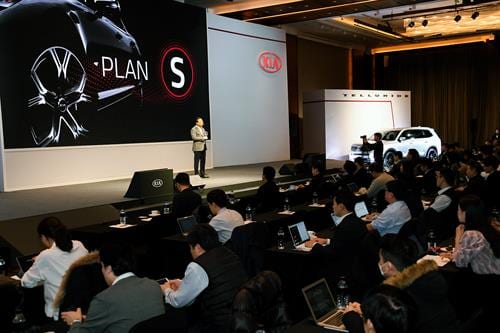Korean carmaker Kia has revealed details of Plan S, its mid- to long-term business strategy encompassing electrification and mobility services, as well as connectivity and autonomy.
Plan S will see Kia invest US$25bn (£19.1bn) by the end of 2025 in an effort to establish leadership in vehicle electrification and diversify its business.
As part of this investment, Kia will offer EV-based mobility services that aim to help solve global urban problems such as environmental pollution.
In cities that are responding to climate change and supporting EV popularisation, Kia will collaborate with local partners to establish Mobility Hubs that house EV charging stations, vehicle maintenance centers and various convenience facilities.
These Mobility Hubs will be utilised as transfer stations between EVs and internal combustion engine vehicles, the latter of which cannot enter certain urban areas due to environmental regulations.
Using various infrastructures such as charging stations and convenience facilities inside the Mobility Hubs, Kia will reportedly explore new business models.
In the long term, the company aims to operate self-driving robo-taxis and on-demand robo-shuttles in urban centers that also operate the Mobility Hubs.
“As the auto industry undergoes turbulent changes, today is also an opportune time for Kia to radically transform itself into a global enterprise dedicated to spearheading customer value-led innovations,” said Kia Motors President and CEO Han-woo Park.
Kia is also turning its attention to what it calls the purpose-built vehicle (PBV) market, which serves corporate and other customers.
The company will develop and supply target client oriented PBVs, such as car-sharing vehicles, low-floor logistics vehicles for onboarding and offboarding, and delivery trucks equipped with cooling and refrigeration equipment for fresh deliveries.
Kia will also expand its business model to include a customised PBV business centred on electric and self-driving vehicles that use an integrated modular ‘skateboard’ platform, such as mini-size driverless delivery cars and robo-taxis.
The skateboard platform incorporates a flat, low-mounted battery and compact motor, two of the core EV components, atop a skateboard-shaped platform.
Such a structure allows a car body to be mounted on top depending on users’ functional needs.
For PBVs used for special purposes, Kia will collaborate with outside players and utilise its own network for the special equipment vehicle business, as well as establish a dedicated development team and production system.





